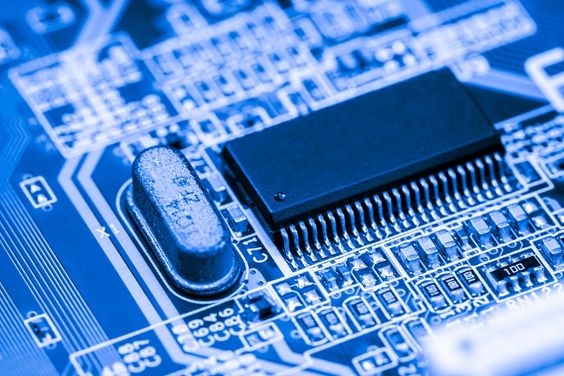How PCB Assembly Automation is Transforming the Electronics Industry?
The innovative realm of electronics is constantly and rapidly changing; resulting in the need for more proficient and trustworthy PCB assembly processes. Technological advancements—like robotics, machine learning, and artificial intelligence—have completely revolutionized the electronics sector by automating PCB assembly. This blog post will look at how automation is shaping the way PCBs are assembled, and what positive influence it has on both manufacturers and end-users.

I. Enhancing Efficiency and Precision in Production
Streamlined Workflow Optimization: PCB assembly automation eliminates repetitive and time-consuming manual tasks by automating various stages of the production process. Automated systems can precisely place components, solder connections, and inspect for defects with unmatched speed and accuracy. By reducing human error and increasing throughput, manufacturers can achieve higher production rates and improve overall efficiency.
Improved Quality Control: Automation technologies enable real-time monitoring and inspection of the assembly process, ensuring consistent quality control. Robotic systems can identify and rectify errors, such as incorrect component placement or soldering defects, at an early stage, minimizing the risk of faulty products reaching the market. By maintaining high standards of quality, manufacturers can enhance customer satisfaction and brand reputation.
II. Cost Reduction and Resource Optimization
Labor Cost Savings: PCB assembly automation significantly reduces the reliance on manual labor, resulting in cost savings for manufacturers. Automated systems can perform tasks that would typically require multiple operators, allowing companies to optimize their workforce and allocate human resources to more complex or value-added activities.
Minimized Material Waste: Automation technologies enable precise component placement, reducing the likelihood of errors and minimizing material waste. By accurately positioning components and optimizing soldering techniques, manufacturers can maximize the utilization of expensive components and reduce the need for rework. This leads to substantial cost savings and contributes to a more sustainable manufacturing process.
III. Accelerating Time-to-Market
Rapid Prototyping and Iteration: PCB assembly automation facilitates faster prototyping and iteration cycles, enabling manufacturers to bring new products to market more swiftly. Automated systems can quickly assemble and test PCB prototypes, allowing engineers to identify design flaws and make necessary adjustments promptly. This iterative approach reduces development time, allowing manufacturers to stay ahead in competitive markets.
Flexibility in Manufacturing: Automated assembly lines offer manufacturers the ability to quickly switch between product variants or accommodate customized orders without significant downtime. By reprogramming the automated systems, production lines can adapt to different PCB designs, ensuring faster turnaround times and increased customer satisfaction. The ability to swiftly respond to market demands enhances a manufacturer’s competitiveness and market share.
PCB Assembly Automation: Winow New Energy Company
In recent years, the electronics industry has witnessed a significant transformation, largely driven by advancements in automation technology. One such area of transformation is PCB (Printed Circuit Board) assembly, where automation has revolutionized the manufacturing process. PCB Assembly Automation, enabled by sophisticated machinery and software, has not only improved production efficiency but also enhanced product quality and reliability.
1. Increased Efficiency and Productivity:
With the introduction of PCB Assembly Automation, the electronics industry has experienced a remarkable boost in efficiency and productivity. Traditional manual assembly methods were often labor-intensive and time-consuming, resulting in longer production cycles and increased costs. However, automation has streamlined the entire assembly process, enabling faster and more precise manufacturing. Automated machines can accurately place components on PCBs, solder them, and carry out various quality checks swiftly, reducing human errors and increasing overall productivity.
2. Enhanced Quality and Reliability:
Quality and reliability are crucial factors in the electronics industry. Manual assembly processes were prone to errors, leading to defective products and customer dissatisfaction. PCB Assembly Automation has significantly improved quality control by eliminating human errors and ensuring consistent assembly standards. Automated machines can precisely place components, apply solder with precision, and conduct thorough inspections, resulting in fewer defects and higher product reliability. Additionally, automation allows for traceability, making it easier to identify and rectify any potential issues.
3. Cost Reduction:
Automation in PCB assembly has brought about cost savings for manufacturers in several ways. Firstly, automated machines can perform tasks at a much faster rate than humans, reducing labor costs and increasing production capacity. Secondly, the precision and accuracy of automated assembly reduce the need for rework and minimize material wastage. Moreover, automated machines can work around the clock, leading to improved production uptime and higher output. Overall, PCB Assembly Automation helps manufacturers optimize their resources, reduce costs, and enhance their competitive edge.
4. Flexibility and Adaptability:
The electronics industry is known for its rapidly evolving technology and changing market demands. PCB Assembly Automation provides manufacturers with the flexibility and adaptability required to keep up with these dynamics. Automated machines can handle various PCB designs, component sizes, and assembly techniques, enabling quick setup and changeover. This agility allows manufacturers to respond promptly to customer demands, launch new products faster, and stay ahead in a highly competitive market.
5. Value-added Services:
With the advancements in PCB Assembly Automation, manufacturers now have the ability to offer value-added services to their customers. For instance, automated inspection systems can identify potential quality issues early on, preventing faulty products from reaching the market. Additionally, automation enables the integration of advanced testing and verification processes, ensuring that the assembled PCBs meet strict quality standards. Manufacturers like Winow New Energy Company specialize in PCB Assembly Automation design services, providing customers with comprehensive solutions to their assembly needs.
Conclusion:
PCB assembly automation has become a game-changer in the electronics industry, empowering manufacturers to achieve higher productivity, improve product quality, and reduce costs. By leveraging automated systems, companies like Winow New Energy Company have witnessed substantial benefits, including enhanced efficiency, optimized resource allocation, and accelerated time-to-market. As automation continues to advance, it will undoubtedly shape the future of PCB assembly, enabling further innovation and propelling the electronics industry to new heights.

